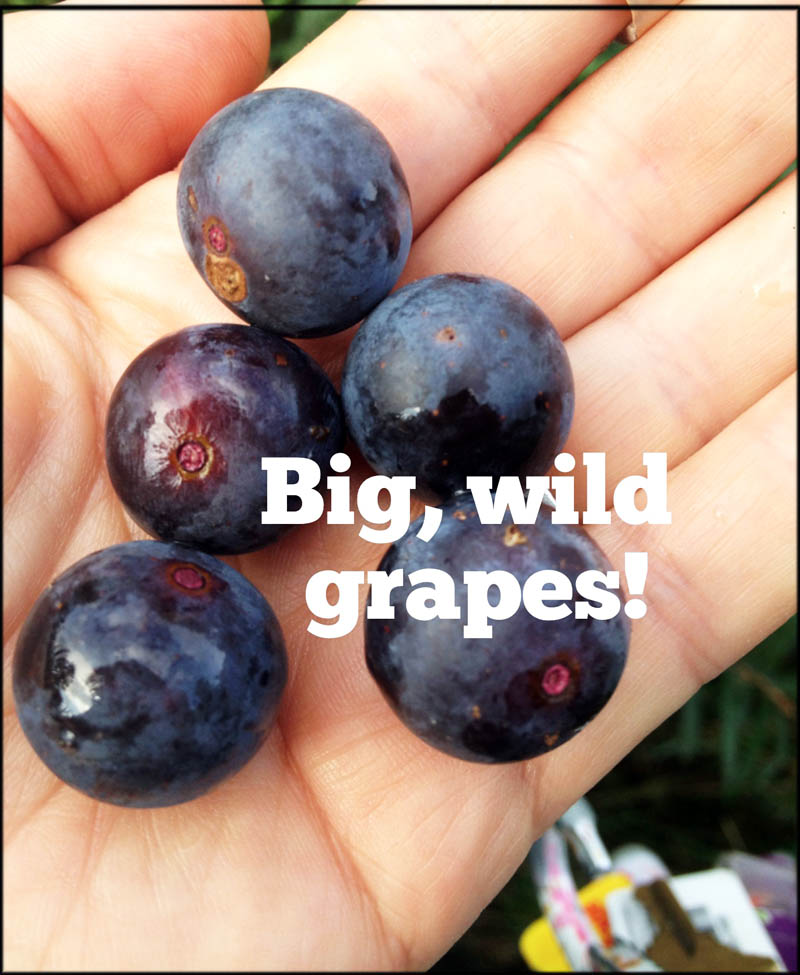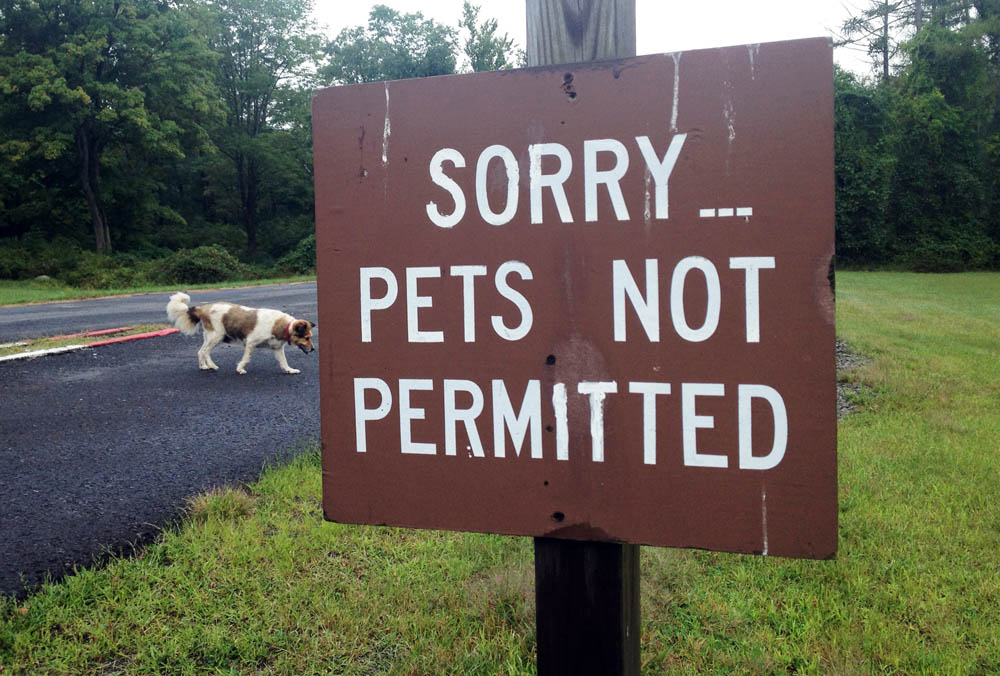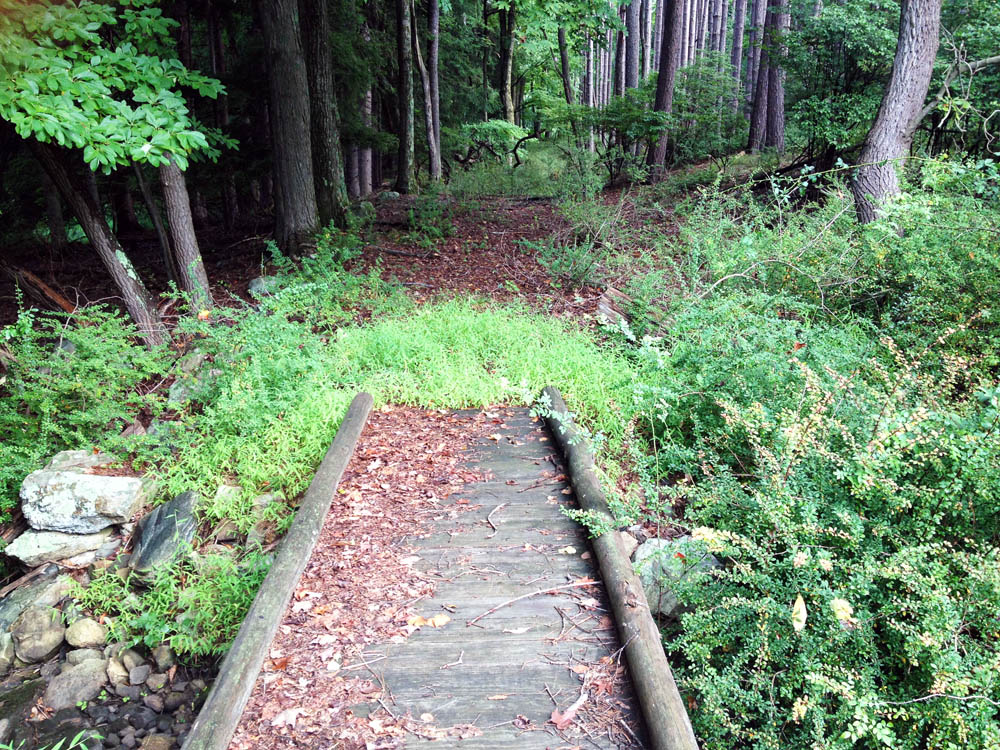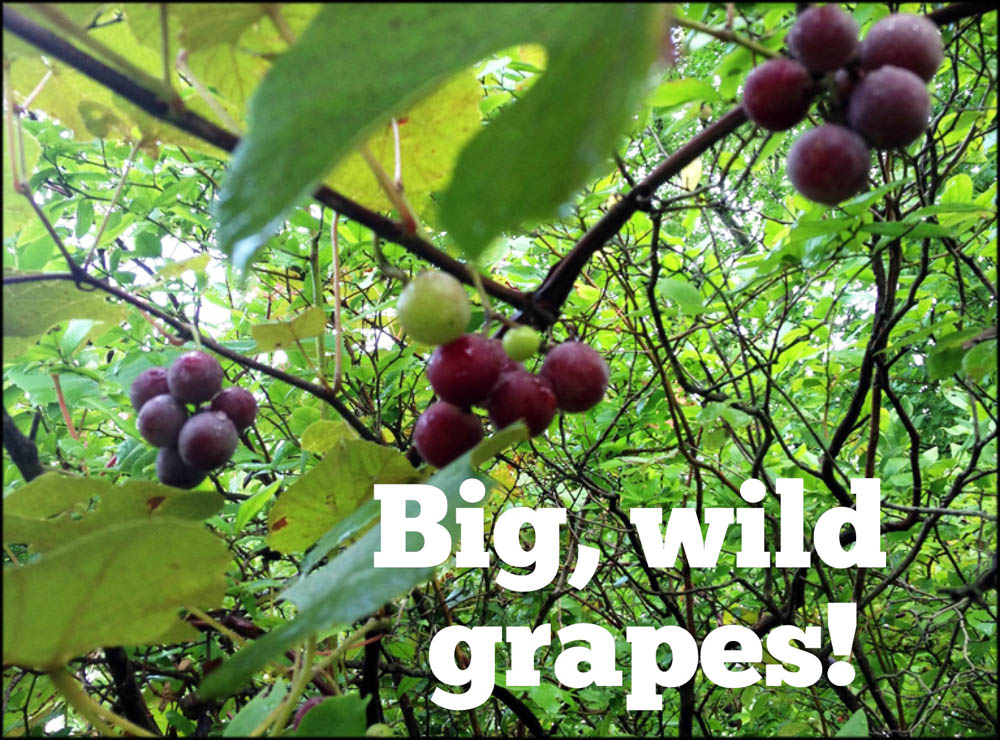
Wild grapes grow large in Harriman State Park, in the meadow near the entry to Lake Sebago beach (now closed). Can’t help thinking of Major Welch. ©www.myharriman.com
I’ve never seen grapes this large, in the wild or otherwise. They’re huge.
Curious about the current state of (now closed) Lake Sebago beach, I parked the car along the beach entrance road off Seven Lakes Drive, and hiked in with my two elderly shepherds, Wolf and Charlie.
There’s a grassy verge that lines the entry road, near where the parking ticket-taker booth is. To the left of the old ticket gate, the vines of wild grapes hang over the tops of trees and shrubs, and are heavy with the old purple, loose-skin, Concord variety.
But to the right of the ticket gate, a large field curves away toward a darker forest — an old pine grove that contains, among other things, the graveyard of former Johnsontown inhabitants. So Wolf and I went just to the edge of this forest while Charlie lolled lazily on the grass.
Here we looked up a large pine or larch, to see the most enormous wild grapes woven in among the branches, hanging down. They weren’t the Concords, or the wild, tart fox grapes (smaller), but they were reddish in hue. And they were really, really big.
I’ve never seen grapes this large, in the wild or otherwise. They’re huge.

No pets allowed at the permanently-closed Lake Sebago Beach, in Harriman State Park. Charlie takes it in stride. ©www.myharriman.com
I picked a few – three or four is a handful — and ate them. They had tough, almost leathery skins, but underneath was the loose and sweet “eyeball” of the grape. They could use another week of ripening.
I’d love to know what kind of wild grapes — or cultivated grapes that went wild — these are.
One of the neat things about Harriman State Park is its history of farmers, miners, berry-pickers and townspeople who made the mountains, meadows and valleys their homes. I expect they planted all kinds of fruits and vegetables, and that the antique remnants of these crops still thrive at the edge of forests and streams. These grapes may have been planted by residents of old (now gone) Johnsontown, where Sebago Beach now stands (now nearly gone).

Wooden, well-made bridge into the pine plantation, near the harvest of giant wild grapes. This bridge leads to a nearly-gone trail through the pines, and toward a small Johnsontown cemetery. ©www.myharriman.com
These giant wild grapes are located at the edge of the grassy field at the entrance to Lake Sebago Beach, off Seven Lakes Drive, close to the ticket gate, on the right-hand side of the road as you enter. Park the car (briefly, and not on the weekend, because it’s not legal!) near the gate, on Seven Lakes Drive (you won’t be able to drive onto the beach entry road, as it’s chained off). Look for the large evergreen at the edge of the woods. Then look up. More grapes are growing nearby; you might see a well-made wooden bridge leading into the pine plantation, and you’ll find more grapes close by that bridge.
I referred to the excellent book by William J. Myles and Daniel Chazin, “Harriman Trails, A Guide and History” for historical information for this post.




Did you ever discover the identity of these grapes? I believe I have the same ones all I’ve my property.
I didn’t! I was hoping they were the famous Iona grapes, but I don’t think so. I’ll have to look into this.
I came across your story and I too am wondering about the lineage of these grapes.
Any further clues?
Cheers…Mac
I can’t believe I am just now stumbling upon this information. Lake Sebago Beach was one of my earlier jobs while in high school and into college. I have so many fond memories of this place and am sad to hear that it is no longer open to the public. I live in NC now and rarely have an opportunity to get back up to NY, but will try and make this one of my stops to explore and check it out!